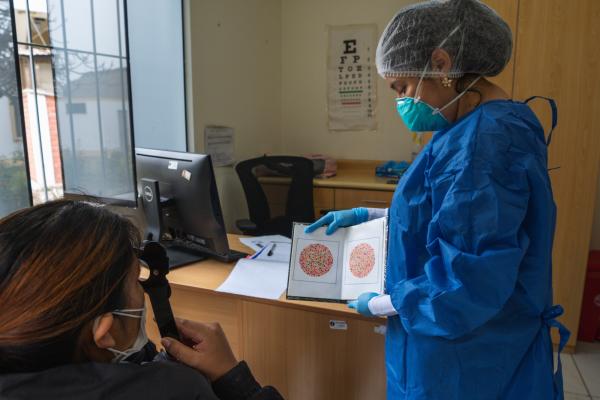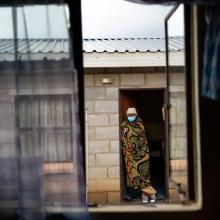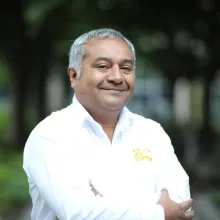Some patients with highly drug-resistant tuberculosis (TB) could benefit from a shorter treatment regimen with fewer drugs while others may warrant more aggressive therapy, according to the findings of a new study known as endTB-Q.
This study was part of the larger endTB project. A partnership between Partners In Health (PIH), Médecins Sans Frontières, and Interactive Research and Development, and funded by Unitaid—endTB utilized clinical trials of new drugs in shorter treatment regimens to dramatically improve the treatment of drug-resistant TB around the world. The endTB-Q trial was conducted in 17 countries, including three countries where PIH works: Kazakhstan, Lesotho, and Peru.
The endTB project has been critical in sharing new research and innovations in TB treatment. In 2024, the World Health Organization (WHO) recommended three new regimens for multidrug- or rifampicin-resistant tuberculosis (MDR/RR-TB), which were studied in the endTB clinical trial.
Despite being completely preventable and curable, TB is the world’s deadliest infectious disease. While TB occurs everywhere, many of the cases and deaths—around 80%—occur in low- and middle-income countries. These disparities highlight the importance of research that makes treatment more accessible.
“We must continue to support and expand such clinical trials as endTB and endTB-Q,” said Amanzhan Abubakirov, endTB co-investigator with PIH Kazakhstan. “It is precisely these scientific initiatives that bring us closer to the global goal—a world without deaths from tuberculosis. Every new study is a step toward shorter, safer, and more effective treatment that changes the lives of millions of people.”
endTB-Q, specifically, is the first-ever clinical trial to focus exclusively on people with pre-extensively drug-resistant tuberculosis (pre-XDR-TB), a form of the disease that is more challenging to cure than multidrug-resistant TB but not yet as difficult as extensively drug-resistant TB.
“The endTB-Q trial is a testament to our mission of bringing modern science to the most vulnerable communities,” said Dr. Leonid Lecca, executive director for Socios En Salud, as PIH is known in Peru. “For PIH, it reflects our commitment to health equity, through which we continue to demonstrate that it is possible to conduct high-quality clinical research in resource-limited settings—investing all our effort and knowledge to always keep the patient and their family at the centre.”
The findings highlight the importance of selecting therapy to account for patient-to-patient differences—such as lung damage—and giving everyone with pre-XDR-TB a treatment regimen that is the most likely to be effective and limits toxicity for them, the researchers noted.
The aim of the endTB-Q trial was to test whether a shorter, more tolerable treatment would be effective in patients with pre-XDR-TB. The trial’s investigators compared an experimental regimen that used a combination of four drugs—bedaquiline, delamanid, clofazimine, and linezolid—for six or nine months to a regimen based on the standard of care recommended by the World Health Organization (WHO), which included four to six drugs taken for 18 to 24 months.
“Traditional treatment for drug-resistant TB has been long, toxic, and often ineffective. The results of the endTB-Q trial helped to change the mindset of TB specialists by demonstrating that patients with pre-XDR-TB could complete treatment in just six to nine months, experience fewer side effects, and achieve better outcomes,” said Assel Stambekova, TB program manager for PIH Kazakhstan. “The trial also emphasized the importance of patient-centred care—showing that a comprehensive approach to follow-up, side effect management, and psychosocial support is just as critical as the medications themselves.”
The results of the trial showed that the shorter regimen could be a promising alternative for many patients with pre-XDR-TB. The study found that the shorter regimen was 87% effective while the longer therapy was 89% effective. The research was designed to measure “non-inferiority,” a technical term that describes when an experimental treatment is good enough to replace an existing standard of care. In this study, the shorter regimen did not meet that standard across the full study population.
The study found differences in the way patients responded to the shorter regimen. Those with more advanced lung damage did not fare as well as those with less advanced disease. For the first group, the shorter regimen—even when delivered for nine months—was not as beneficial as the longer regimen. This could mean treatment needs to be longer in that group or treatment needs to be reinforced with more drugs, the researchers said.
“This shorter regimen is not a surefire cure for everyone,” said Carole Mitnick, professor of global health and social medicine at Harvard Medical School, PIH’s director of research for the endTB project, and co-principal investigator of the endTB trial. “The big takeaway is that we might need a more tailored approach to treatment of this kind of resistant TB.”
The recent guidance from the WHO, which came out after the endTB-Q trial was underway, recommends six-month regimens irrespective of disease severity. The researchers shared that, given the findings of this study and similar results from other studies, the guidelines should be updated to include consideration of stratified approaches to care based on resistance pattern and extent of disease.
“We are most proud of having contributed to generating evidence that can help change global treatment guidelines for drug-resistant tuberculosis—and of having done so from Peru, with a committed and highly trained local team—but it is important for our colleagues to know that endTB-Q does not end with the publication of its results,” Dr. Lecca said. “The true impact of this trial depends on our ability to advocate for the implementation of these new treatments in national and international health policies.”



